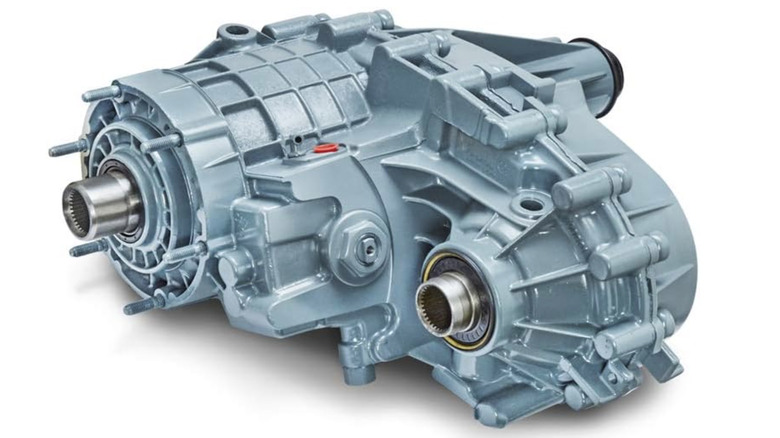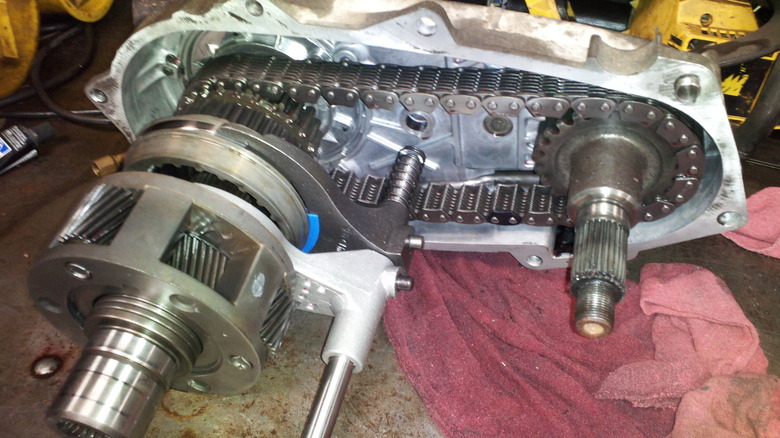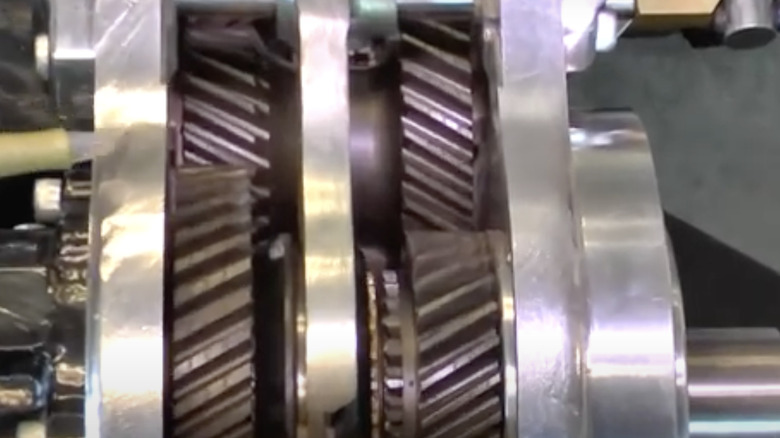What Is A Transfer Case In A Vehicle And How Do They Work?
We may receive a commission on purchases made from links.
A car is an intricate assembly of tens of thousands of parts, from tiny screws and washers to a sometimes massive engine block that can weigh well over 100 pounds. The failure of just one part like an ignition switch or coil wire can disable a car, and some vehicle components like engines and transmissions are made up of dozens or hundreds of even smaller parts. These intricate assemblies require a fascinating synchronicity of those parts to work correctly, as well as proper lubrication.
Another critically important and complex mechanism found in four- and all-wheel drive vehicles is the transfer case. You may have heard this term many times and still remain unfamiliar with what its job is and how it works. I have been working on vehicles since I was a teenager, and in those three-plus decades, I've restored close to a dozen Jeeps and International Scouts. Several of those vehicles required transfer case replacements or rebuilds, tasks that have made me intimately familiar with how transfer cases work and the pros and cons of the various types of transfer cases.
A transfer case distributes power from the transmission to the axles
A transfer case usually sits near the middle of a vehicle's undercarriage and is responsible for sending power from the transmission's output shaft to one or both axles depending on the driver's needs. Older transfer cases on most vehicles were either chain- or gear-driven and were controlled with a floor-mounted shift lever. Modern transfer cases, like the one on the current edition of the Ford Bronco, are electronically controlled via dials or buttons, and some full-time all-wheel drive models, like the BMW M3 xDrive, have similar controls to send power to one axle only.
The photo above shows the internal workings of a New Process 231 transfer case, which was used on part-time four-wheel drive Jeeps, Chevys, and Dodges from 1988 through 2006. The shaft on the right sends power directly from the transmission to the rear axle, and when the driver engages four-wheel drive via the shift lever, the shift fork moves the chain so that it also engages the front output shaft. This shaft connects to the front driveshaft via an external yoke, allowing the vehicle to move in four-wheel drive. The planetary gearset at left in the photo above is there to reduce the speed at which the front output shaft rotates when the driver engages four-wheel low mode while multiplying the case's torque output.
[Featured image by Dana60Cummins via Wikimedia Commons|Cropped and scaled|CC-By 3.0]
Gear-driven cases are more durable and expensive than chain-driven cases
Slack in the chain or damaged teeth on the shaft sprockets can prevent both shafts from turning when four-wheel drive is engaged, and issues with the shift linkage or fork can prevent the case from moving from two- to four-wheel drive and back again. The chain-driven NP231 was used from 1988 on in the XJ Cherokee, which we ranked as the best generation of that model.
Gear-driven transfer cases work similarly to chain-driven cases, but the two shafts are connected via a gearset instead of a chain and sprockets. Gear-driven cases like the Advance Adapters Atlas tend to be more durable, but are louder and heavier and are therefore less suited for use in passenger vehicles. They are also more expensive than chain-driven cases. The Atlas two-speed transfer case for a TJ Jeep Wrangler with a manual transmission and 4.0-liter inline six-cylinder engine sells for $2,476 directly from Advance Adapters, while you can pick up a New Process 231 for an XJ Cherokee or YJ Wrangler for $1,149 from Powertrain Proucts.
Electronic transfer cases have a motor that distributes power to the output shafts and are regarded by some off-road enthusiasts as more troublesome than lever-operated cases. The complexity of electronic cases makes them pricier than mechanical cases; a stock replacement case for a 2023 Toyota Tacoma, for example, will set you back nearly $3,000.


